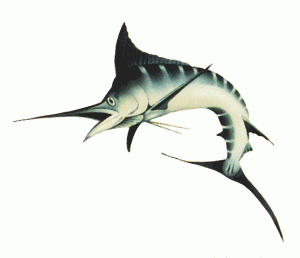How Big is a Blue Marlin
A blue water fish endemic to the Atlantic Ocean, the blue marlin is a famous game fish because of its high fat content. It is known for its other English names including ocean guard, ocean gar and Cuban black marlin. It likes to live in temperate and tropical waters. Aside from man, it has a number of other predators including the shortfin mako and the great white shark. In addition to these highly important details, it is also good to learn something about the size of a blue marlin.
the blue marlin is a famous game fish because of its high fat content. It is known for its other English names including ocean guard, ocean gar and Cuban black marlin. It likes to live in temperate and tropical waters. Aside from man, it has a number of other predators including the shortfin mako and the great white shark. In addition to these highly important details, it is also good to learn something about the size of a blue marlin.
The Size of a Blue Marlin
How big is a blue marlin? Based on reports, female blue marlins weigh at the average about 1,200 to 4,000 pounds or 540 to 1,800 kilograms. For males, their weight rarely goes beyond 350 pounds or 160 kilograms. In terms of length, females can grow more than 13 feet or 4 meters. Almost 20 percent of the length of a blue marlin is made up of its bill.
Additional Facts and Other Highly Interesting Details
The blue marlin has a total 24 vertebrae, 13 of which are caudal and the other 11 precaudal. It also has a couple of anal fins and a couple of dorsal fins. The first dorsal fin is comprised of 43 rays at most. Meanwhile, the second dorsal fin is made up of 6 to 7 rays. In terms of color, its body is generally described as bluish-black while the underside is silvery white. Furthermore, its body is made up of 15 stripes, which are pale and cobalt-colored.
Aside from these interesting features, the blue marlin also has a stout and long bill. Its palatines and jaws are comprised of file-like teeth. Reportedly, this type of fish can withstand long migrations. It usually hangs out in the waters of the Bahamas, Venezuela and the Caribbean Islands. Furthermore, it can also be found in the waters of West Africa, U.S. Virgin Islands as well as Saint Thomas.
Once the males are sexually mature, their weight typically range somewhere from 77 to 97 pounds or 35 to 44 kilograms. On the other hand, females are heavier, the weight of which ranges from 100 to 130 pounds or 47 to 61 kilograms. It has a great economic importance, particularly in Japan where it is used widely in making sashimi. Recreational fishermen love to catch this kind of fish because of its beauty, rarity and other wonderful sporting qualities.





